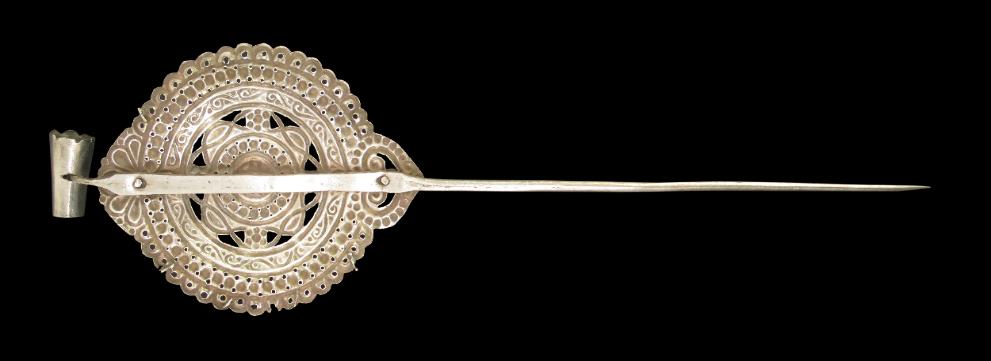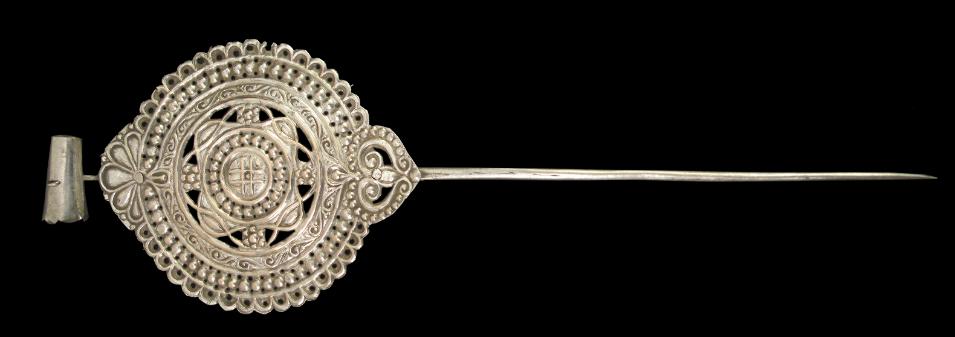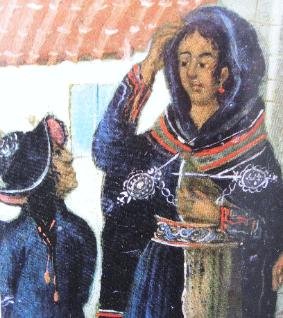
Spanish colonial silver – tupu
Chiselled Perforated Silver Shawl Pin (Tupu)
Boliva
19th century
length: 29.5cm, weight: 51g
This cloak pin or tupu (also known as topo) comprises a silver openwork circular plate, embossed and incised with a scalloped edge, attached to a long silver pin.Tupus were worn point facing upwards to hold the dress together and to pin the cloak or shoulder mantle (lliclla) about the shoulders. They were a prominent means of displaying wealth and finery for women across the Andes. Worn in pairs, the pins were worn in both pre and post colonial times, although the styles of the pins changed with colonialism. This example is a case in point with its cruciform central motif, suggesting a European Christian influence. The top of the head of this tupu shows a stylised shell form as a crowning element, which is most probably based on the scallop shell of Christian pilgrims.
References
Tupus of similar form are illustrated in Ribera, A.L., & H.H. Schenone, Plateria Sudamericana de los Siglos XVII-XX, Hirmer Verlag Muchen, 1981 (p. 383); Phipps, E. et al, The Colonial Andes: Tapestries and Silverwork 1530-1830, Metropolitan Museum of Art/Yale University Press, 2004 (p. 357); Taullard, A., Plateria Sudemericana, Ediciones Espeula de Plata, 2004; de Lavalle, J.A. & W. Lang, Arte y Tesoros del Peru: Plateria Virreynal, Banco de Credito del Peru en la Cultura, 1974 (P. p. 171); Silverworks from Rio de la Plata, Argentina, Smithsonian Institution, date unknown (p. 38).
Provenance
UK art market
Inventory no.: 827
SOLD
for another example of a tupu.




Detail from an eighteenth century oil painting showing a Bolivian woman wearing a pair of tupu.

